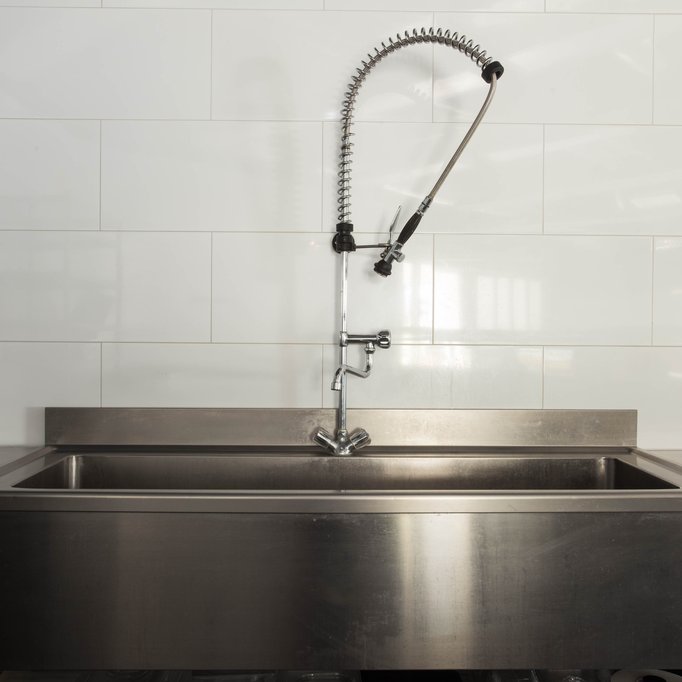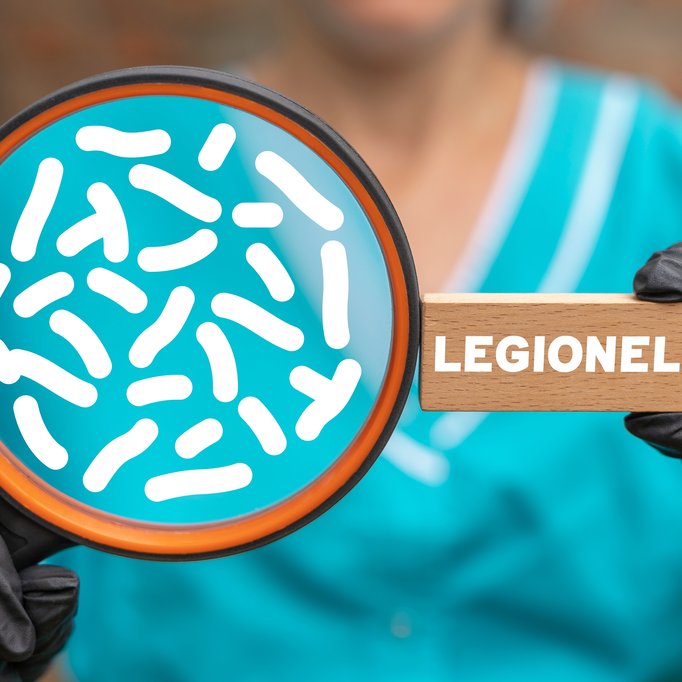Legionella Risk Assessment
Legionella testing and risk assessments are legally required in certain situations. We can help you to stay compliant and ensure the health and safety your building’s occupants. Get a FREE quote today

Under the Health and Safety at Work Act 1974, all managers of buildings are mandated to carry out Legionella Risk Assessments (LRAs). A building manager has a duty of care towards those living in their buildings; anyone performing an LRA must have access to both administrative as well as inspection capabilities. Hiring a professional water hygienist ensures you comply with Legionnaire's Disease prevention guidelines while also providing practical advice on how to decrease the risk of one of your occupants getting this life-threatening condition. The primary source for most cases of Legionnaires' Disease is the Legionella pneumophila bacterium, though it may also be brought about by similar strains of bacteria. This type of pneumonia is life-threatening—especially among older or very sick people, such as those who smoke or suffer from lung conditions. In order to ensure the safety of building occupants, an Legionella Risk Assessment must be undertaken.
Although Legionella is present in nature, it mainly lives in waters and outbreaks occur from water systems found in buildings such as cooling towers, hot and cold water systems, shower heads, and whirlpool spas; provided the temperatures are at 20-46°C (68-116°F). The bacteria multiply due to the presence of rust, sludge, natural organic matter or other sources of nutrients. Humans are at the most risk when the contaminated droplets can be widely dispersed—this typically occurs via inhalation. Duty holders have a responsibility to identify and assess risks posed by working activities and building water systems; they also must make sure that these risks are suitably managed through proper maintenance.
For more information or for a FREE quote, call us on 0344 499 7574 or email info@greenzonesurveys.com.


Legionnaires’ Disease is a severe form of pneumonia caused by the Legionella bacterium. It is a potentially deadly form of pneumonia that can affect anyone, but mainly affects those who are over the age of 50 and have other health problems or a weakened immune system. The infection is caused by inhaling small droplets of water containing the Legionella bacterium. Symptoms of Legionnaires’ Disease include fever, cough, muscle aches, and shortness of breath. If left untreated, Legionnaires’ Disease can be fatal.
Individuals exposed to the Legionella bacterium may develop Pontiac Fever—a milder infection than Legionnaires’ Disease. Symptoms are primarily fever and muscle aches. Symptoms can begin between a few hours to 3 days after being exposed to the bacteria and usually last less than a week. Pontiac Fever is different from Legionnaires’ Disease because someone with Pontiac Fever does not have pneumonia.
Below are some frequently asked questions to provide you with further information about this service
Legionella is a bacteria found in natural and man-made water systems such as hot tubs, cooling towers, fountains, air conditioning systems, and showers. It is not found in chlorinated water systems or well water. The bacteria can be spread through airborne droplets, and people become infected when they breathe in contaminated mist or vapour.
Legionella bacteria thrive in warm water environments where temperatures range from 20-46°C (68-116°F). The bacteria prefer warm, still water and can multiply rapidly in this type of environment. High levels of organic material like dirt, rust, sludge, and scale can also promote the growth of Legionella.
Humidity is another factor that promotes the growth of legionella bacteria. Humid air provides moisture for the bacteria to thrive and spread quickly. Poorly maintained water systems that contain stagnant or slow-moving water are most susceptible to harbouring bacteria.
Additionally, old plumbing systems can provide a hospitable environment for legionella to proliferate. If these systems are not properly maintained and cleaned, the chances of contracting Legionnaires’ disease increase significantly. It is important to keep these systems clean, sanitized, and well-maintained to reduce the risk of infection.
Legionella bacteria can cause a potentially fatal form of pneumonia called Legionnaires' Disease, as well as the less severe Pontiac Fever. People exposed to Legionella bacteria can become very ill and even die from this infection. The symptoms of Legionnaires’ Disease include fever, coughing, chest pains, and difficulty breathing. Anyone can become infected with Legionella bacteria, but those at higher risk include people over the age of 50, smokers, those with chronic lung disease, people with weakened immune systems, and those who take medications that suppress their immune system.
The risk of contracting Legionnaires' disease can be greatly reduced by regularly conducting tests and risk assessments to identify potential sources of Legionella bacteria. This includes regular testing of water systems and routine maintenance of these systems in accordance with applicable regulations. Regular maintenance should include monitoring for legionella bacteria, draining and cleaning water tanks, and other preventative measures such as keeping water temperatures below 50°C (122°F).
Legionella testing and risk assessments are important for a variety of reasons. First, it is essential to identify any areas in a building that are at risk for harbouring Legionella bacteria, as exposure to this bacteria can cause Legionnaires' Disease, a severe form of pneumonia.
Secondly, many countries have implemented specific regulations on the prevention and management of Legionella in public buildings, including stringent testing and risk assessment protocols. Business owners and property managers have a legal duty to ensure that they are compliant with these laws in order to avoid any potential fines or other legal penalties.
Finally, conducting a regular Legionella Risk Assessment provides peace of mind to those using the premises. Customers, employees, visitors and other stakeholders will have confidence knowing that their health and safety is taken seriously by the business. This can help to enhance the reputation of the business, as well as its ability to attract customers and clients.
In summary, Legionella testing and risk assessments are essential for identifying and managing any potential sources of exposure to Legionella bacteria, complying with applicable laws and regulations, and providing reassurance to those who use the premises.
Legionella testing and risk assessments are legally required in certain situations. The Control of Substances Hazardous to Health Regulations 2002 (COSHH) requires employers to identify and assess potential sources of exposure to legionella in the workplace, and take action to prevent or control any risks found. This includes assessing any existing systems, such as cooling towers and water systems, as well as installing systems designed to protect against legionella contamination.
In addition to COSHH, the Health and Safety at Work Act 1974 places a duty of care on employers to take all reasonable steps to provide a safe working environment. The control of Legionella bacteria in water systems also outlines specific guidance on what employers should do to ensure their premises meet the requirements for Legionella testing and risk assessments.
Overall, it is important to be aware of the legal responsibilities regarding Legionella testing and risk assessments. Employers, business owners, and property managers should consult a professional who is experienced in these areas to ensure that they are compliant with the relevant regulations.
Our qualified and experienced surveyors can provide you with an LRA wherever you are based in the UK. Contact Green Zone Surveys on 0344 499 7574 or email info@greenzonesurveys.com for a quote or more information. Read More At HSE.gov.uk.
The formal system of Legionella control in the UK now comprises the HSE's ACOP L8 (4th edition) and HSG274 which is split into three parts:
• Part 1 – cooling water systems
• Part 2 – hot and cold water systems
• Part 3 – other risk systems
Duty holders (building owners, landlords and employers) have a responsibility to evaluate potential risk situations and take whatever steps are necessary prevent or minimise the risk from exposure to legionella. Management driven and supported with detailed paperwork to be kept for at least five years. A Legionella Risk Assessment is a legal requirement.
ACOP L8 regulations suggest that the legionnaires’ risk assessment should be reviewed regularly.
The guidance used to advise that an LRA should be carried out every 2 years, however, they now suggest the risk assessment should be regularly reviewed to ensure it remains up to date.
At Green Zone Surveys, we provide the highest possible level of Legionnaires’ Disease ACOP L8 (4th Edition) & HSG274 assessment and compliance. Our risk assessment includes:
• Management responsibilities, including the name of the competent person
• A survey and description of your hot and cold water systems
• Competence and training of key personnel
• Any identified potential sources of contamination
• Monitoring, inspection and maintenance of the system
• Records of the monitoring results and inspections and checks carried on the systems
• Arrangements to review the risk assessments regularly
Are you aware of the HSE Approved Code of Practice – Legionnaires’ Disease: The control of Legionella bacteria in water systems - ACOP L8 (4th Edition) and HSG274? You should be. They are important documents and have huge implications on the measures that need to be taken by employers to avoid Legionella and comply with their duties under Health and Safety legislation.





